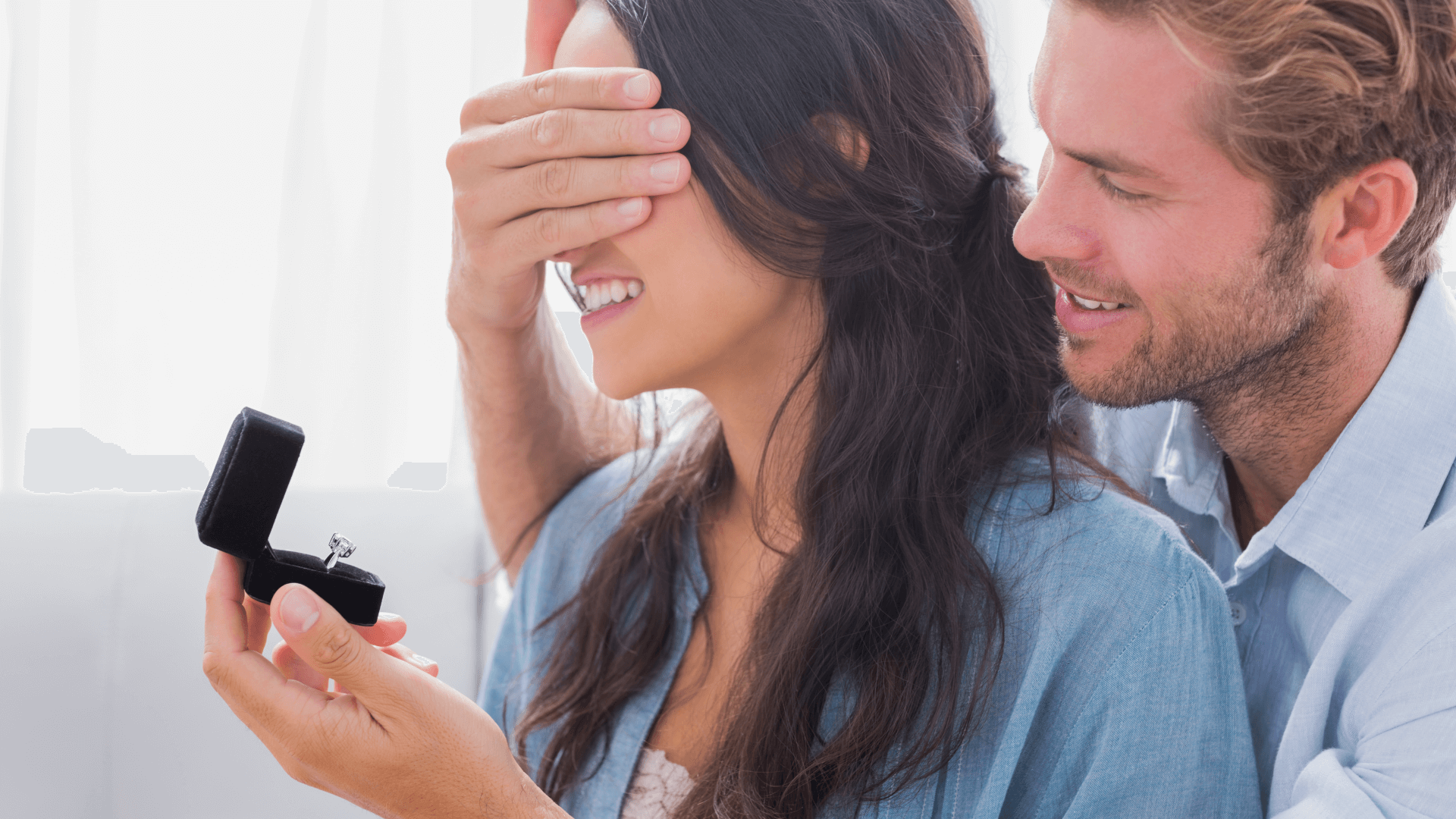
The Ultimate Engagement Ring Buying Guide
Engagement Ring Guide

Falling in love is easy, but finding the perfect engagement ring for the person you want to spend the rest of your life with can feel much more complex.
To help make the ring shopping process easier, our team of jewelry experts has put together this A-to-Z guide that addresses everything from budget to brilliant cuts. All that’s left is to figure out which ring makes your pulse race and then pop that all-important question.
How Much Should You Spend?

If you Google the question “How much should I spend on an engagement ring?,” you get a wide variety of answers. One of the most common is to spend two to three months’ salary. That recommendation is not tradition but rather a myth that sprang from a jewelry marketing campaign in the 1930s. The original suggestion was to spend a month’s pay on a ring; by the 1980s, the recommended amount had doubled. Today, some sources have upped the supposed standard even further, telling ring shoppers to spend a whopping three months’ worth of their salary on their sparkly purchase.
In reality, what you spend on an engagement ring for your sweetheart is an entirely personal decision. In 2020, the average cost of an engagement ring in the United States was $5,500. Of course, some couples spend far less, and others spend exponentially more. It depends on your budget and your ideal aesthetic, including what type of metal your future spouse prefers, whether you want a diamond or an alternative stone and the complexity of the setting.
Ultimately, it’s important to choose a ring that feels right in terms of both quality and value.
Choosing Your Metal
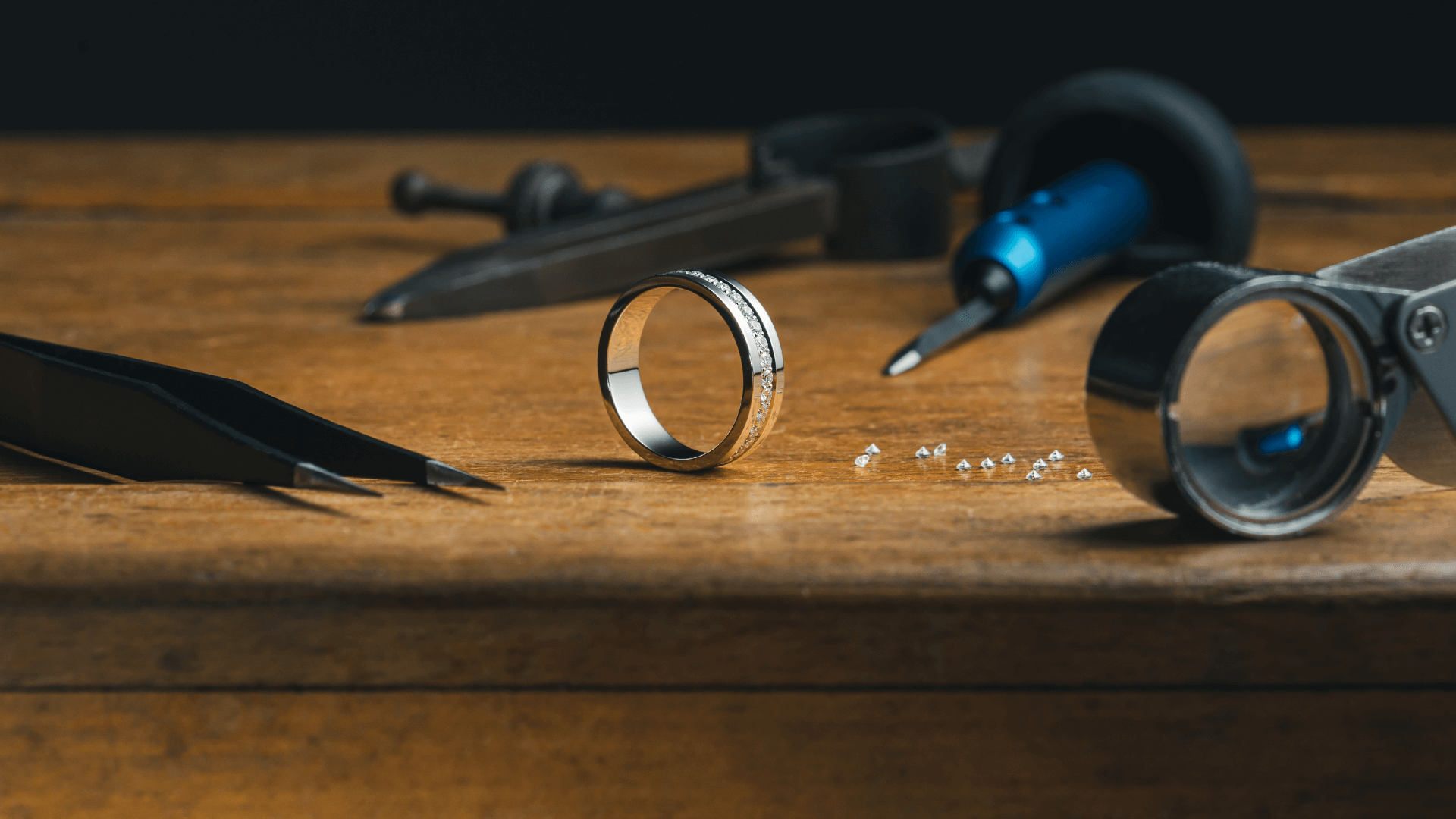
The metal used in engagement rings contributes to the look of the ring as well as its strength and durability. From go-to options like yellow gold to more modern alternatives like palladium, each metal has its own distinct advantages (and a few disadvantages to consider, too).
Yellow gold
Yellow gold has a long-standing history in the world of bridal jewelry. While the first wedding and engagement rings often featured natural, less-flashy materials like bone and wood, gold soon became the metal of choice throughout Ancient Greece and Rome. The widespread affinity for gold has never faded — it’s still the top choice for rings today, though couples in modern times have more options in terms of the color and karat weight of the gold they choose.
Pure gold is quite soft and must be combined with other metals such as nickel, copper, zinc and silver (creating an “alloy”) to increase strength and stability. You’ll most frequently find jewelry marked 18K (75% gold), 14K (58% gold) and even some 10K (around 42% gold). Yellow gold usually features a higher percentage of copper and silver to achieve its signature warm, sunny hue.
The higher the gold content, the softer the metal — if you’re concerned about scratches and overall maintenance but still want a gold setting for your ring, a 14k gold alloy may be your best bet.
White Gold
White gold is a gold alloy that typically features gold mixed with silver, palladium and/or nickel and plated with rhodium for that gorgeous, lustrous white finish. This blend of metals helps make white gold stronger than yellow gold. It’s also surprisingly affordable and looks stunning against the colorless fire of a quality diamond or the vibrancy of a colored gem like an emerald or ruby.
There are only two potential disadvantages to white gold. The first is that it’s slightly higher maintenance, requiring a touch-up to the rhodium plating every few years. The second is that the presence of nickel in the gold alloy can cause allergic reactions in people with nickel sensitivities.
Rose Gold
Rose gold is a gold alloy that’s heavy on copper and silver, resulting in a metal that boasts a stunning pinkish, peachy-red hue. This option ticks several boxes: it’s perfect for romantics, people who love bohemian vibes and anyone who appreciates a more vintage aesthetic.
Though rose gold looks soft and sweet, the fact that it contains copper often makes it more durable than white or yellow gold. It’s also less prone to damage from everyday wear and tear, and it’s quite affordable. Just watch out for potential copper allergies.
Platinum
Platinum is prized for its bright luster that epitomizes modern elegance. This metal is naturally light, with a remarkable brilliance that makes any diamonds set into the metal seem even more sparkly. Platinum is also hypoallergenic and impressively durable, making it a great choice for someone who may have sensitive skin and also for more active people such as athletes or those who work with their hands.
All these benefits come at a high price tag. Platinum is rarer than gold (miners unearth a mere 160 tons of platinum each year versus the 1,500 or so tons of gold mined annually) and will likely cost much more.
Palladium
Palladium and platinum are often mistaken for each other, and for good reason. Both have that covetable silvery-white coloring and are durable. But palladium has less density than platinum, making it a lighter-weight alternative. Another interesting fact is that when palladium is scratched, the metal doesn’t come off. Instead, it’s displaced. Over time, the small dings and scratches that come with regular wear give palladium rings an attractive patina that you won’t find on platinum.
Depending on the market, palladium may cost the same as or more than platinum. Still, it’s an attractive choice for anyone looking for a metal that’s durable, comfortable and designed for longevity. But keep in mind that palladium is a difficult metal to work with. You may discover there aren’t many options for palladium settings, and it may be more difficult to have a palladium ring sized after purchase.
To determine which metal best suits your soon-to-be fiancée, think about how each option would look against her skin tone and which would mesh best with her lifestyle.
Also, take a look at her existing jewelry collection and even her wardrobe. If your significant other favors classic jewelry that’s almost entirely based in yellow gold, you’ll want to buy her a ring that will fit into that collection. If she embraces a more bohemian style, you may want to look at rose gold or even a custom band that mixes metals.
Choosing a Setting and Style
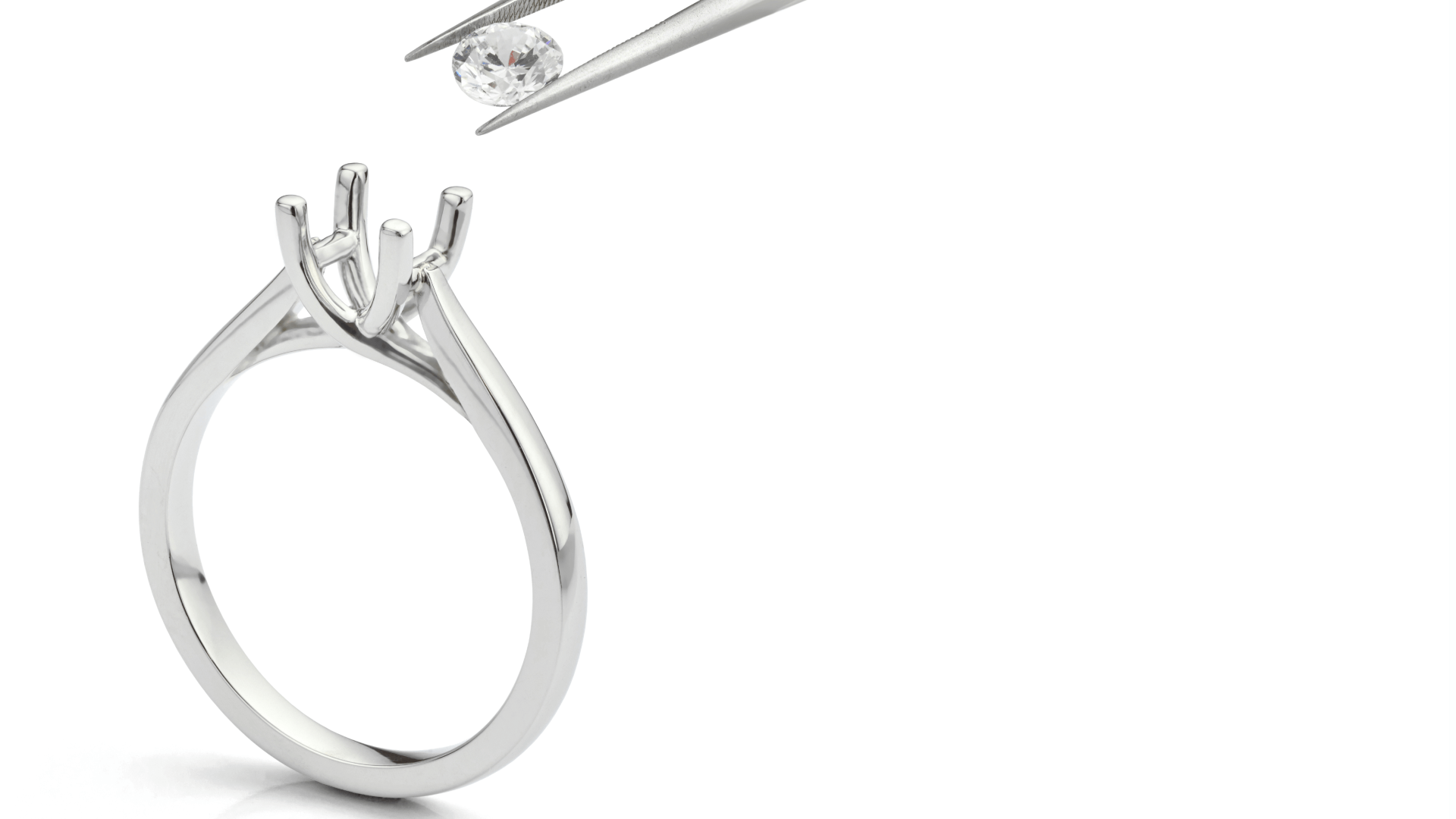
Once you’ve chosen a metal, you’ll need to browse engagement ring styles to see which resonates with you and your future fiancée most.
- The classic solitaire: Solitaire engagement rings are timeless for a reason. This simple yet elegant style features a single stone that lets the quality (and perhaps size) of the diamond shine. This option is perfect for traditional brides who want a streamlined design that blends seamlessly with almost any outfit or accessories.
- Sidestone-accented rings: Think of a sidestone accented ring as a solitaire with a little more oomph. In this setting, there’s a center stone complemented by a series of smaller stones inlaid down the curve of the band. These accent stones may be diamonds, but they could also be colored gemstones chosen based on the bride’s favorite color or her birthstone.
- Three-stone rings: Just as the name suggests, three-stone rings feature three stones. Typically, this means a larger center stone flanked by two smaller stones (one on each side), making this a version of a sidestone-accented ring.
- Matching sets: For the bride who likes to coordinate every outfit down to the tiniest detail, there are matching bridal sets that ensure the engagement ring and wedding band complement each other perfectly. These sets match in style as well as fit — this is especially important to consider if you’re buying an engagement ring that’s especially ornate or has larger stones. A wedding band bought separately might not have the right shape to nest comfortably against a carved band.
Shopping for Diamonds

Though couples are finding an increasing affinity for diamond alternatives, diamonds are still the top choice for engagement rings. In fact, more than 80% of people opt to have a diamond as their center stone. Before you buy a diamond, you need to understand what makes a stone special and how to choose a gem that fits your needs and budget.
The 4 Cs
As explained in our comprehensive Diamond Buying Guide, diamonds are evaluated according to the 4 Cs:
- Carat: Most people think “carat” refers to the size of a stone, but it actually measures weight. This is an important distinction, because two diamonds that are the same carat weight can appear to be different sizes depending on how they’re cut. A diamond with a deep base may have a higher carat weight, but because of a narrow face or top, it may appear smaller. In other words, a larger carat weight doesn’t necessarily mean you’ll get a ring that looks larger.
- Color: The less color a diamond has, the more valuable it is, with the exception of what experts refer to as “fancy-color diamonds” (yellow and black versions, for instance). The highest color rating for a diamond is a D or E, which indicates that the stone is completely colorless. At the other end of the spectrum are diamonds rated N through Z, which have noticeable coloring, usually washes of beige, brown or an undesirable yellow.
- Cut: A diamond’s cut is not its shape but rather how it has been carved to maximize its proportions and ability to reflect light. Experts assess cut by looking at everything from table size to crown height to pavilion depth. This C is one of the most difficult to analyze, as a truly brilliant diamond requires both technical skill and artistry.
- Clarity: It’s incredibly rare to find a diamond that’s truly flawless, but the fewer imperfections a diamond has, the higher it will be graded (and the more expensive it will be). Clarity ranges from Included (I1-I3), which indicates a stone with obvious blemishes that compromise the diamond’s brilliance and transparency, to Flawless (FL), a designation assigned to diamonds that have no internal or external imperfections.
Diamond Shapes
Another major consideration when shopping for a diamond is the stone’s shape. There are 10 major shapes, each with a set of characteristics that make it unique unto itself and suited for certain settings, metals and individuals.
- Round-cut diamonds are the most popular shape by far and often make their way into classic solitaire rings.
- Princess-cut diamonds are square with pointed corners and numerous facets for lots of radiance.
- Emerald-cut diamonds feature an elongated shape with beveled sides and a flat top.
- Asscher-cut diamonds carry several similarities with emerald-cut stones, but rather than an elongated shape, Asschers are more squared off.
- Marquise-cut diamonds are pointed ovals with countless facets cut in a way that maximizes carat weight. This is a smart cut for those looking for a stone that reads larger than it is.
- Oval-cut diamonds take all the brilliance of a round-cut stone and put it into a skinnier oval shape.
- Radiant-cut diamonds can be square or rectangular and typically feature trimmed corners, but the cut’s most visible calling card is the intricate network of facets that give the stone its mesmerizing sparkle.
- Pear-cut diamonds are rounded at one end and pointed at the other, similar to a teardrop.
- Heart-diamonds feature a traditional heart shape, perfect for timeless romantics.
- Cushion-cut diamonds are also known as “pillow cuts” because the shape has graduated sides that lead to a flat top, not unlike a pillow or cushion, plus plenty of facets for impressive overall brilliance.
How to Find Out Her Ring Size
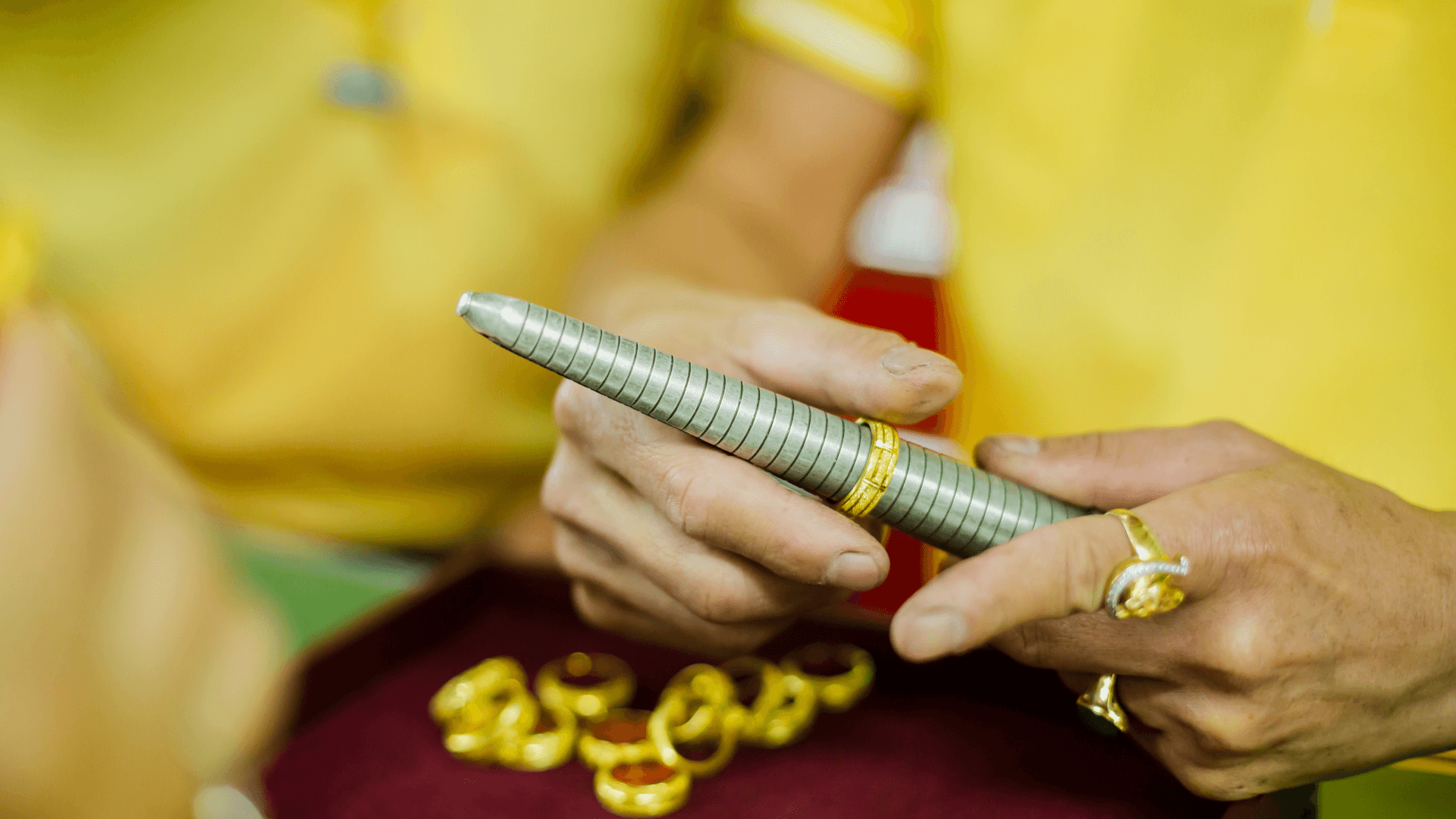
In most cases, it’s not difficult to have an engagement ring resized after the proposal, but it certainly feels more magical if you’re able to propose with a ring that already fits like a glove. To figure out your sweetheart’s ring size without tipping her off, you may need to become a bit of a detective.
Ask Her Friends and Family
Now’s the time to recruit her loved ones to help you complete your mission. You’d be surprised how good your future mother-in-law or your girlfriend’s BFF are at doing reconnaissance. They might be able to encourage your love to try on rings during a shopping trip and then report back what size fits best. Or perhaps your MIL can let her daughter try on some family heirlooms under the guise of an innocent trip down memory road and see which of grandma’s rings fit best. Have a friend who recently got engaged? They might be open to letting your girlfriend try on the ring so you can get a ballpark idea of whether you need that size or something bigger or smaller.
If you do base ring size off of a vintage ring like an heirloom, it’s best to have your fellow detectives give you the ring rather than just tell you the ring size. Some vintage rings may not be sized the same as contemporary jewelry, so having the actual ring to measure using a jeweler’s sizing guide will give you the most accurate results.
Use One of Her Own Rings
This is probably the easiest method. If your future fiancée already wears a lot of rings, including one on her ring finger, just borrow one when she’s at work or otherwise occupied and take measurements. If you don’t have access to a proper measuring tool or time to take it to the jeweler, trace the inside of the ring and use that to gauge sizing later on.
Measure Her Finger on the Sly
Is your sweetheart the kind of heavy sleeper that could snooze through an earthquake? If so, you might be able to sneak in actual finger measurement without her noticing. The quickest way is to wrap a piece of string or strip of paper around her finger and either tie it and slip it off or mark where the end meets. You can then measure that loop using a proper ring gauge later on.
Guess
Guessing is obviously the riskiest method listed here, but sometimes all you can do is give it your best estimate. The most common ring size for women is between 6 and 6.5. If your future wife is particularly petite, you may want to go smaller, to a size 5. If she has a larger frame, consider a larger size.
For more help, check out our Find Your Ring Size guide — there’s even a sizer you can print and cut out to make your engagement ring sizing and buying process even easier.
Choosing an engagement ring is a personal process. You might fall in love with a certain stone or metal and care less about the setting, or you may know exactly what setting you want and let that determine the size of your stone. What’s most important is that the overall design is balanced. At Allurez.com, you can choose from thousands of rings created by expert jewelers or design your own engagement ring that reflects the one-of-a-kind nature of your relationship.
Have more questions or need help finding your perfect diamond engagement ring? Email our team at service@Allurez.com today.

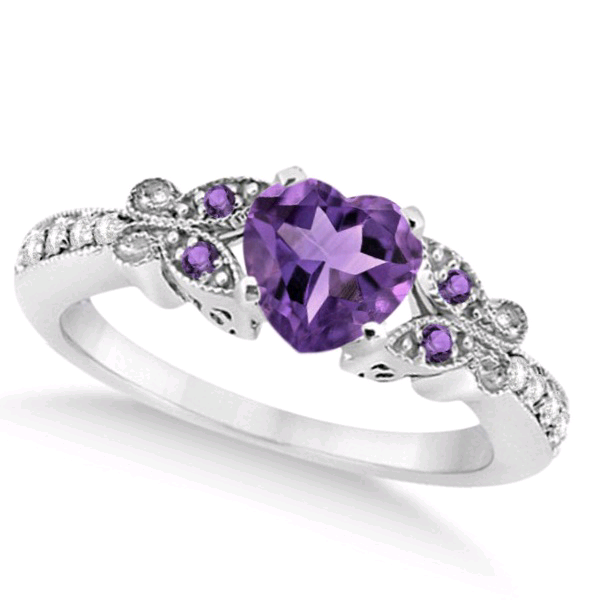
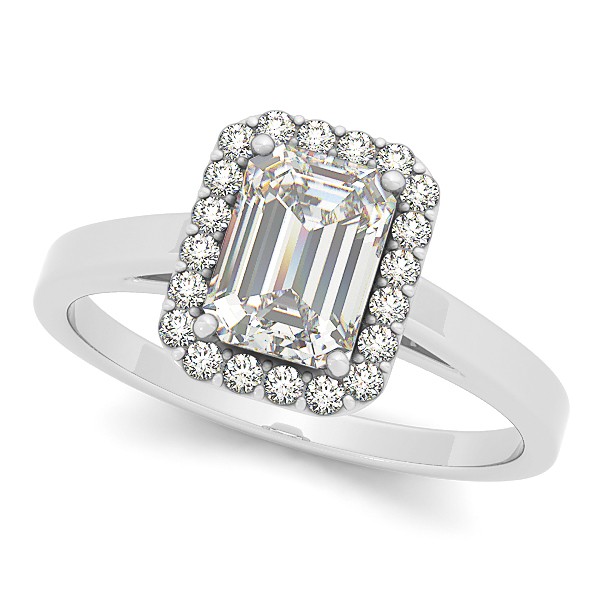
POST COMMENT